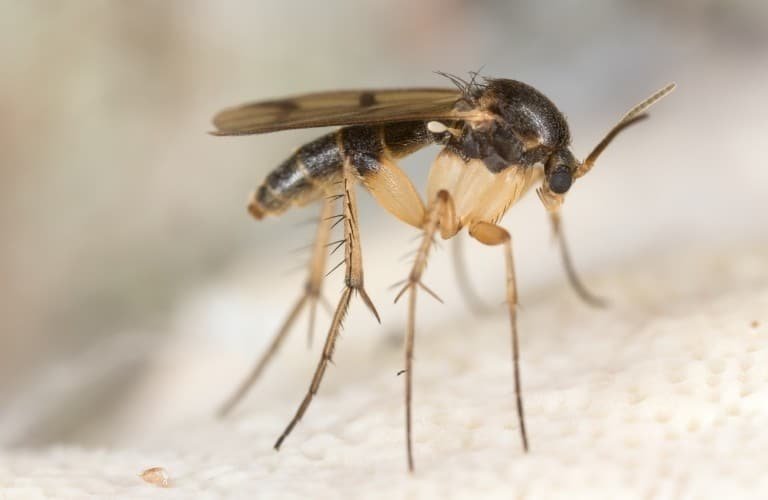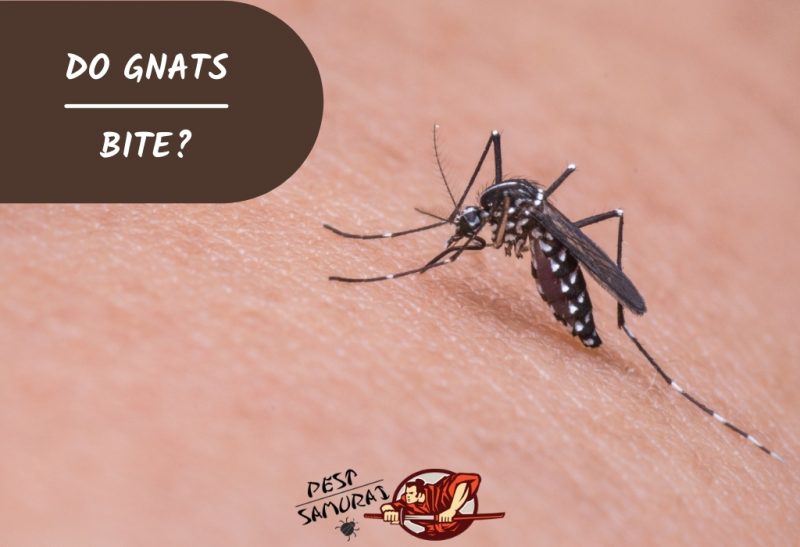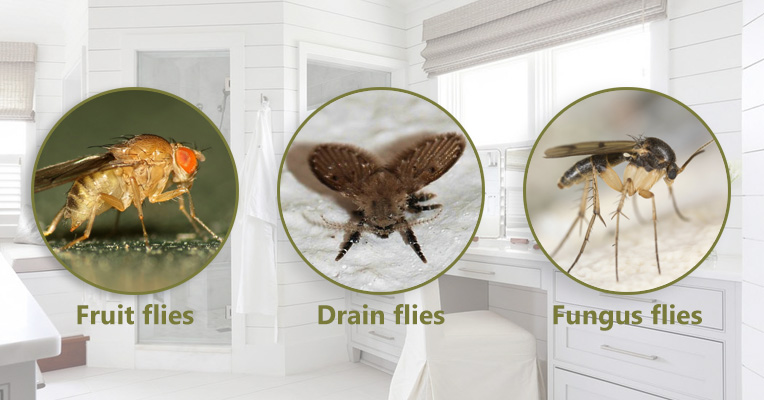This time around, we shall cover How Long Do Gnats Live Without Food. Obviously, there is a great deal of information on how long do fruit flies live without food source on the Internet. The fast rise of social media facilitates our ability to acquire knowledge.
How Long Do Gnats Live Indoors-related material is also connected to How Long Do Flies Live? and How Long Do Flies Live?. As for further searchable items pertaining to how long will fruit flies live without food, they will likewise have anything to do with At What Temperature Do Gnats Die.

32 Facts How Long Do Gnats Live Without Food | how long do gnats live without food
- There are six different families of insects that make up the broader category of fungus gnats. These include the Sciaridae, Mycetophilidae, Ditomyiidae, Bolitophilidae, Diadocidiidae, and Keroplatidae. Most fungus gnat species are not harmful to our gardens, but the dangerous ones are in the Sciaridae family, especially those in the Orfelia and Bradysia species. - Source: Internet
- Fruit flies, Drain flies, and Phorid flies resemble gnats to the naked eye, but gnats are much smaller under closer examination. Determining the breeding source will help you understand the type of fly you have. Fruit flies and Phorid flies breed from organic matter like fruits and vegetables, food spillage, and garbage. Drain flies breed in drains and sewer tanks and soil contaminated from sewage. - Source: Internet
- Those tiny “gnats” you see circling an overripe banana on your kitchen counter? They aren’t gnats at all. They’re fruit flies. Not only are they annoying, they can also be bad for your health. But there are plenty of ways to make them go away for good. - Source: Internet
- While adults don’t cause any lasting damage, the fungus gnat larvae of that family will move on to plant roots once their preferred foodstuff is gone. The larvae chew holes in the roots and cause yellowing, wilting, and even plant death in large numbers. Not only do they damage roots, but the Sciaridae can spread disease. Since their preferred food is fungal growth, they easily pick up spores from infected plants or soil and spread diseases. - Source: Internet
- “It’s been thought that [the need for sleep] has a similar architecture” to the need for food, says study author Giorgio Gilestro, a systemic biologist at Imperial College London. But in this new study, Gilestro and colleagues found that male flies deprived of sleep lived as long as regular fruit flies, while female fruit flies also deprived of sleep died earlier, but only by an average of three days. Three days is about six to eight percent percent of the 40 to 50 day lifespan of a fruit fly. - Source: Internet
- A fruit fly infestation won’t just go away on its own—it’ll likely only get worse. Even if the adult fruit flies die, you’ll continue to get new fruit flies every day unless you cut off the source. If you do nothing, they’ll just breed on unnoticed crumbs, spills, and food particles. - Source: Internet
- Swatting away gnats from your face or food can be extremely annoying. They are attracted to body heat, water, and sweet or fruity scents. Gnats are one of the most common types of pesky flies that you’ll find in your home or outside. - Source: Internet
- The best way to prevent an infestation is to keep adult flies from entering your home. Place mesh screens on all of your windows and doors, and be sure to diligently clean your home, especially areas where food is frequently prepared or consumed. Additionally, hanging a plastic bag of water from your doorframe will discourage house flies from entering your home, as the presence and movement will mess with their vision and deter them from coming inside. - Source: Internet
- The gross reality is that fruit flies are mostly just annoying, but they do pose slight health risks. They can transport bacteria or germs as they land on food and surfaces in your home, which can occasionally lead to health issues. If you clean up an area with a lot of flies, you should wash your hands well afterwards, and wash any fruits and vegetables that are still on your counters before eating them. - Source: Internet
- Fruits and vegetables are the primary places where adult fruit flies lay their eggs. To do so, the produce needs to be overripe or rotting – they won’t try to burrow into food that is not yet fermenting. Once conditions are right, the adult fruit fly breaches the outer portion of the fruit or vegetable and deposits eggs inside. - Source: Internet
- Though houseflies are small, they usually cannot fit through window screens or properly sealed homes. This means caulking your foundation, fixing any cracks or leaks in pipes, and ensuring your property is as guarded against flies as possible. Take Out Trash and Clean Trash Cans Often: Flies are heavily attracted to decomposing organic matter and excess food. Your trash can is a great resource for both pests, so maintaining them often is key. - Source: Internet
- No, fruit flies do not bite people. They lack the piercing and sucking mouth parts of typical blood feeding flies. While considered a general annoyance in homes and other institutions, fruit flies can be significant pests in food processing and handling structures. Because of their habits of visiting unsanitary sites, they have the potential to carry disease causing germs. When fruits infested with fruit fly larvae are ingested accidentally, it may cause gastrointestinal discomfort and diarrhea. - Source: Internet
- Not just the food you eat, but your pet food and any products that contain sugars. Storing things like fruit and other produce may also attract flies if it is not properly covered or sealed. Seal all windows, doors, and cracks: Though houseflies are small, they usually cannot fit through window screens or properly sealed homes. This means caulking your foundation, fixing any cracks or leaks in pipes, and ensuring your property is as guarded against flies as possible. - Source: Internet
- The life cycle of the fungus gnat is made up of four stages: egg, larvae, pupae, and adult. Adult fungus gnats lay about three hundred eggs in their short lifespan. They typically live for about a week as adults, so they make the most of their time! Adults lay eggs in rich and fertile, moist soil at the base of house plants on the soil surface. - Source: Internet
- The most visible sign of fruit fly infestation is the presence of the adults. Usually seen swarming around fruits and vegetables left out on kitchen or commercial countertops or in and around refuse bins and other receptacles in which foods are disposed, fruit flies congregate en masse and feed on the decaying materials until any food source is gone. Fruit flies typically remain in areas with suitable food sources. Diners, bars, cafes, and restaurants often need to take special precautions to limit fruit fly infestations. Stowing raw, whole foods in refrigerated or vacuum-sealed units also helps to prevent fruit fly infestations. - Source: Internet
- Fruit flies are minuscule, so it’s easy for them to get into your house. They’re attracted to overripe fruit that’s sitting out on your counter, plus they love moist surfaces and sink drains where food and residue may be built up. If you have fruit flies, it doesn’t mean you have a dirty home—but it does mean you need to do something right away. - Source: Internet
- I’ve dealt with fungus gnats in my indoor and outdoor garden before. While they didn’t do a lot of damage indoors, they decimated my outdoor sprouts during a particularly rainy spring season. These dudes may not have the strength in numbers that other pests do, but they can do damage quickly. - Source: Internet
- Here, we have performed a detailed analysis of starvation-induced behavior in S flies to examine the relationship between adult foraging-related behaviors and selection for starvation resistance. Surprisingly, S flies have dramatically reduced food intake and prolonged sleep duration as adults, raising the possibility that the foraging behaviors modulating the rate of energy usage are also critical for survival. These findings support the notion that sleep and feeding represent two mutually exclusive behaviors that are highly plastic in accordance with an animal’s environment and evolutionary history. - Source: Internet
- Common Name(s) Fungus gnats Scientific Name(s) Multiple, but the dangerous ones to plants are Sciaridae family spp. Family Sciaridae Origin Worldwide Plants Affected Indoor/nursery/greenhouse plants, some outdoor plants. Particularly susceptible are plants such as carnations, African violets, geraniums, and poinsettias, but they can strike any weakened plant in the right conditions. Common Remedies Hydrogen peroxide soil drenches, neem oil, pyrethrin, beneficial nematodes, Bacillus thuringiensis var. israelensis - Source: Internet
- Adult fungus gnats have a similar appearance to that of mosquitos because they are weak fliers. They have long legs and long antennae that are longer than their head. These long antennae distinguish them from one of their look-alikes, robust short flies who are like fungus gnats but are strong fliers. There are a few species that reach up to ½ inch long, while most adult fungus gnats are 1/16 to ⅛ of an inch long. Their wings are clear and grayish, and the Bradysia species has a characteristic y-shaped wing vein. - Source: Internet
- Because of this quick life cycle, multiple generations of fungus gnat are often born in quick succession as larvae feed. Subsequently, overlapping generations of adults emerge from the soil surface. Therefore, many stages of the life cycle may be present at any given time. Not only do you need to get rid of the annoying gnats themselves, but you need to deal with the larvae and find a way to sterilize the eggs before the eggs hatch. - Source: Internet
- We mentioned earlier that insects in your drains could actually be drain flies. Similarly, if you’re seeing a haze of flies lingering around a potted plant, then you may have fungus gnats, not fruit flies. Fungus gnats live and breed in the soil, and rarely travel far from it. - Source: Internet
- Keeping your home tidy and clean is a great way to reduce possible food and water options for flies. Any food waste that remains on your floors or counters will be an instant green light for a fly infestation. Store all food properly: Not just the food you eat, but your pet food and any products that contain sugars. Storing things like fruit and other produce may also attract flies if it is not properly covered or sealed. - Source: Internet
- Neem oil is also an effective soil soak to combat fungus gnat larvae. Dilute the oil with water per the manufacturer’s directions and directly drench the soil at the roots of the plant. You can also spray the upper portion of the plant to keep adult gnats at bay. - Source: Internet
- No matter where in the U.S. you live, fruit flies can show up on your kitchen counters or inside your trash can. They can turn up any time of year but are most common in the late summer and early fall. That’s because they’re attracted to ripe and rotting food. - Source: Internet
- Fruit flies can pop up at any time of year, but they are especially common in the summer months when there are generally more fruits and vegetables ripening. They lay eggs on rotting or fermenting food, which hatch into hundreds of larvae. Then those larvae lay eggs, and then those larvae lay eggs, and before you know it you have to move and surrender your home over to the flies. - Source: Internet
- An adult female fruit fly can lay up to 2,000 eggs on the surface of anything that’s moist and rotting. Within 30 hours, tiny maggots hatch and start to eat the decayed food. Within 2 days, they’re all grown up and ready to mate, too. While that transition may seem quick, a fruit fly only lives 8 to 15 days. - Source: Internet
- It’s much easier to stop the fruit flies from settling down in your space if your kitchen is clean and tidy. Start by cleaning up any areas where food might collect and break down. That means keeping your garbage outside or in a container with a well-fitting lid. Throw your food scraps in a compost bag and keep that in the freezer, rather than letting it sit out at room temperature. Flush out the drains of your sink in case old food has collected there. - Source: Internet
- House flies are highly attracted to manure, so they are often found around farms. These pests generally stay within a mile or two of their birthplace, but they have been known to travel up to 20 miles in search of food. House flies enjoy being in the sun, and will perch in sunny spots around your home — retreating to rest at night. - Source: Internet
- Yes, fungus gnats damage plants, but it’s important to kill fungus gnat larvae and adults because they can carry diseases. Those recovering from fungus gnat problems still face the risk of infections. Fungus gnat larvae can spread fungus spores that are dropped by adult gnats to your plant’s roots, possibly causing a number of common plant diseases. The most commonly transferred diseases include black root rot, Pythium blight, Verticillium wilt, Botrytis blight, and Fusarium wilt. - Source: Internet
- The fruit flies that Gilestro’s team studied were safe in a lab environment. The team acknowledges that in real-world conditions, the flies may well not have survived because they were, well, sleepy. But some animals go long durations in nature without sleeping very much at all. In 2016, Niels Rattenborg and colleagues at Germany’s Max Planck Institute published a paper showing that some migratory birds can sleep in the air, but actually do so very little, only an hour a day. The new fruit fly research is “very exciting,” Rattenborg says, offering new information to figure out if sleep is as vital as food. - Source: Internet
- If an area not normally associated with food storage or food consumption has a fruit fly problem, do a thorough cleaning of the room. Look for food that may have been dropped or spilled. Carpets may harbor some moisture from spilled wine, beer or soda. All of these items are major fruit fly attractants. - Source: Internet
 Here are some recommendations for locating information about What Do Fruit Flies Eat to get you started:
- Research If fruit flies live without sleeping, why can’t I?-related information from credible sources. This includes libraries, websites, and even journalistic professionals.
- When researching How To Get Rid Of Fruit Flies, it is vital to be aware of the numerous sorts of electronic media sources, such as Google and YouTube. Social media networks, such as Facebook and Twitter, are also likely to include information on The 10 Most Common Fruit Fly Questions Answered.
Here are some recommendations for locating information about What Do Fruit Flies Eat to get you started:
- Research If fruit flies live without sleeping, why can’t I?-related information from credible sources. This includes libraries, websites, and even journalistic professionals.
- When researching How To Get Rid Of Fruit Flies, it is vital to be aware of the numerous sorts of electronic media sources, such as Google and YouTube. Social media networks, such as Facebook and Twitter, are also likely to include information on The 10 Most Common Fruit Fly Questions Answered.Video | How Long Do Gnats Live Without Food
To obtain the most accurate information on Do Gnats Bite, it is essential to investigate the credibility of each source by reading.
This page contains multiple Fungus Gnats: Getting Rid Of Them Quickly-related films from a variety of sources, which can expand your understanding about How Long Do Gnats Live Indoors. Internet is an excellent resource for getting information on a range of subjects.
## Here are some crucial aspects concerning Where Do Gnats Lay Eggs:- How Long Do Gnats Live Without Food
- How Long Do Gnats Live Without Food Or Water
- How Long Do Fruit Flies Live Without Food
- How Long Can Fruit Flies Live Without Food
- How Long Can Fruit Flies Survive Without Food

With so many websites and forums giving how long can fruit flies survive without food-related information, it is not difficult to locate what you want.
This is a highly unconventional method for obtaining knowledge on What Do Gnats Eat, compared to what most people are accustomed to. It permits a more in-depth examination of the content and application of information regarding At What Temperature Do Gnats Die.
Methods for creating aesthetically pleasing and informative presentations of how long do fruit flies live without food source information. They can be utilized in business and marketing environments to convey messages regarding At What Temperature Do Gnats Die. Consequently, we additionally supply photographs regarding How to (Actually) Get Rid of Fruit Flies.
This article concludes by providing an overview of How to Get Rid of Gnats. In addition, Do Gnats Bite and Can Fruit Flies Bite are discussed to compare your understanding of Altered regulation of sleep and feeding contributes to starvation resistance in Drosophila melanogaster.